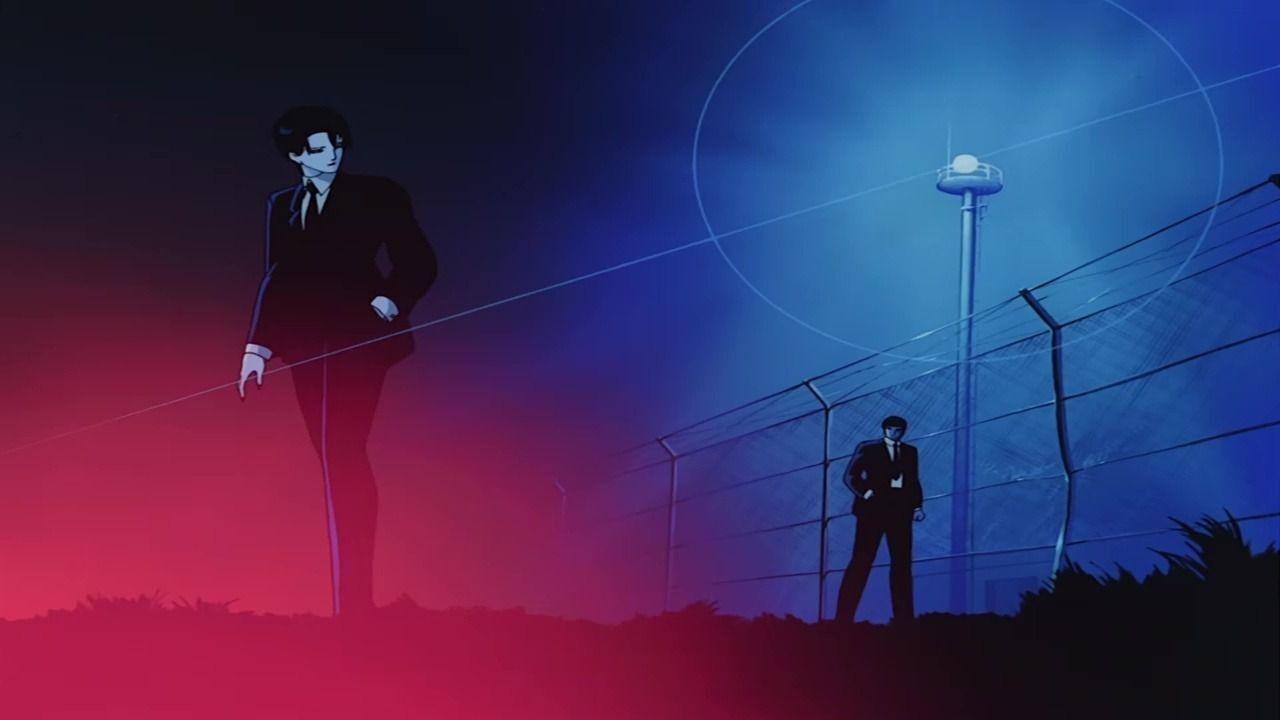Wicked City (1987)—A Stylish, Grotesque and Erotic Romance

Who could forget the 1980s? Not only did they give birth to some of the greatest films of all time, but it also gave us plenty of iconic anime! Who could forget classics such as Dragon Ball Z, Akira and Fist of the North Star? And I’ve only scratched the surface. But if you dig deep enough, you can find some anime films that are relatively unknown outside of a select niche of film and anime enthusiasts. And I’m not talking about Satoshi Kon’s Perfect Blue. Yet. Today’s entry is none other than Yoshiaki Kawajiri’s Wicked City!
In Japan’s not-so-distant future, peace between the human world and the mysterious and sinister Black World is thinly held together by a peace treaty that is set to be renewed. A human Black Guard named Taki Renzaburo (voiced by Greg Snegoff) is sent to protect Giuseppi Mayart, a 200 year old mystic who is politically significant to the treaty’s signing. He is assigned a partner named Makie, a Black Guard from the Black World. The two do their best to keep Myart out of harm’s way, as the Black World radicals make assassination attempt after attempt. However, there are greater forces that have major plans for the two Black Guards and the entire future of mankind.

Unlike several mainstream anime movies and series, Wicked City does something unique with the medium of animation by using its art and action sequences to flesh out its story. For example, the film’s opening scene shows us how deadly the people of the Black World are. Taki takes home a woman at a bar, who’s revealed to be a Black World radical and nearly kills him with her crotch before sprouting spider-like appendages. In Makie’s first scene, she stuns us with her deadly skill in combat, as seen when she effortlessly saves Taki from two Black World radicals. Her cold exterior is also a stark contrast to Taki’s flirtatious banter when she briefly introduces herself which is also mirrored by her flat facial expressions and emotionless eyes.
With the recent rise of the Japanese city pop genre, Wicked City has been featured in plenty of fan made music videos of Mariya Takeuchi’s “Plastic Love” or Taeko Onuki’s “4:00 A.M.”. And I can see why. While the art style itself can be described as minimalistic, it works well into the movie’s favor. Since Wicked City is shot almost entirely at night, it incorporates shadow and contrast while blending shades of color. It also utilizes negative space to create imagery in scenes completely shrouded in darkness. All this creates an aesthetic that’s both beautiful yet haunting. It’s so stylistic, distinctively nostalgic and just screams Yoshiaki Kawajiri. In my opinion, it’s one of the film’s biggest saving graces and one of the reasons why I revisit it time and time again.

What’s the second reason why I revisit this movie? The music. From the soft, minimalistic jazzy score as our heroes drive through a midnight blue starry night sky, to the hauntingly deep vocalizations as we are subjected to the cruelty and evil of the Black World. Much like the animation and art style, the music also tells a story hidden in between the lines. A story of a love so necessary, yet forbidden. You only need to listen to the songs “It’s Not Easy” and “Hold Me in the Shadow” by Hitomi Tohyama to get a glimpse of this forbidden romance. I was blown away by how deep both songs were for such a niche and overlooked movie.
Despite its beautiful visuals and music, the story does suffer a bit. It begins as a quasi-James Bond action movie. However, it soon switches into a romance about halfway through. This change of tone is just absurd and momentarily gives you whiplash. Taki and Makie are complete strangers who up until this point, share no hint of romantic chemistry. Yet somehow, they are supposed to bridge the Black World and the human world? The film explains that they’re genetically the perfect couple to conceive a child that would unite the two worlds. I don’t know about you, but it sounds like a load of hogwash if you ask me.

I won’t lie when I say that I didn’t like Wicked City on my first watch. The aforementioned change of tone really took me out of the film. Not to mention the excessive nudity (seriously, we have a sex scene in the first two minutes) sprinkled throughout its runtime. Yet, I found myself coming back time and time again. The 1980s Japanese aesthetic, the music and creativity of the Black World radicals kept me intrigued and captivated. This is one of those films where the visuals and music unfurl levels the script never reveals at its surface. For those looking for a stylish, unique and heartfelt anime movie, Wicked City might be what you’re looking for!









